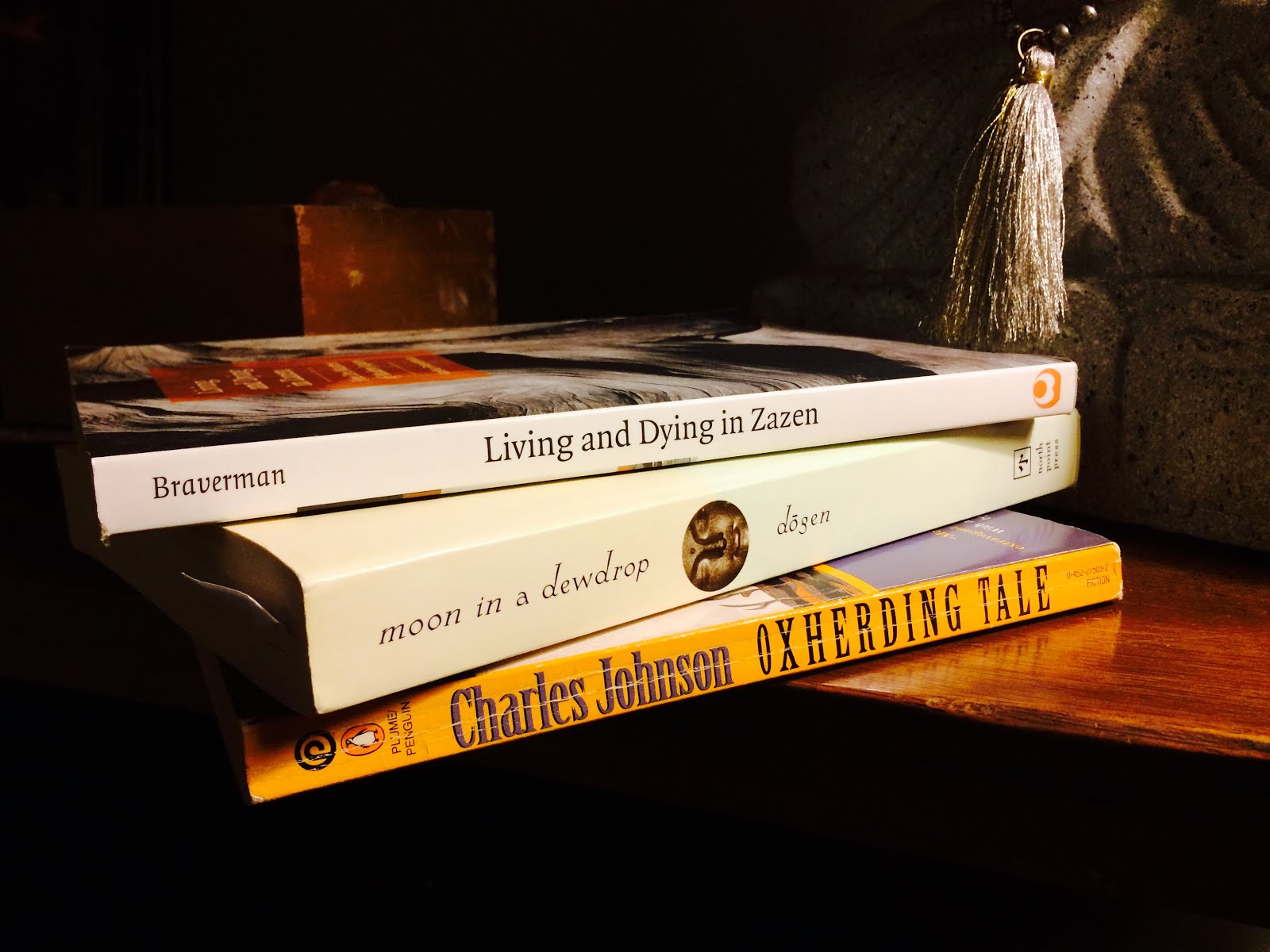I enjoyed this collection of Johnson’s writings on the application of Zen practice to politics, race, culture, and spirituality. This is not a how-to manual on these issues, but rather a collection of essays that have been published in periodicals over the last decade and a half. The six short stories that conclude the collection have Buddhist themes within. Overall, an enjoyable, thought-provoking collection.
Buddhism-influenced essays, stories, and reviews by National Book Award winner Charles R. Johnson.
This wide and varied collection of essays, reviews, and short stories by the renowned author Charles Johnson offers incisive views on politics, race, and Buddhism. Johnson notes that in his life the two activities that have anchored him and reinforce each other are creative production and spiritual practice. This book is a crystallization of what he has learned during his passage through American literature, the visual arts, and the Buddhadharma.
Essays include:
# “And if Peace Is Their Goal . . .” on the principles of enlightened politics
# “The King We Need” on the deep and sophisticated moral philosophy of Dr. Martin Luther King Jr., and why King’s teachings and example are important to all Americans
# “Why Buddhists Should Vote”–Johnson posits that voting can be seen as a way to reduce suffering
# “The Meaning of Barack Obama”–an appreciation of the man who became one of the most historic US presidents, even before his first 100 days were through
# “Why Buddhism for Black America Now?”–what Buddhism can offer the African-American community in the post-MLK era
EXCERPT
Something I find worthy of meditation is how in the dialectic between Samsara and Nirvana, the dreamworld of Samsara is logically prior to and quite necessary for the awakening to Nirvana. When discussing Tantric Buddhism, Gunapala Dharmasiri says in the spirit of Nagarjuna, “We make a Samsara out of Nirvana through our conceptual projections. Tantrics maintain that the world is there for two purposes. One is to help us to attain enlightenment. As the world is, in fact, Nirvana, the means of
the world can be utilized to realize Nirvana, when used in the correct way.”
Perhaps a more concrete way of expressing this in terms of social action is to say we come to the Buddhadharma precisely because the suffering we have experienced in the world of relativity forces us to relentlessly question “conventional” truth and the status quo, as Ashoka discovered that his slaughter of the Kalingas brought him no happiness, or as Buddhist monk Claude AnShin Thomas realized after his killing civilians during the Vietnam War. Or we can consider the case of a black American born in the late 1940s, as I was, a person who knows firsthand the reality of racial segregation in the South and North fifty years ago, and the subtler forms of discrimination in the post–civil rights period, which I call “Jim Crow lite.” He (or she) discovers that many Eurocentric whites project fictitious racial “substance” (or meaning) onto people of color, never seeing the mutable individual before them. (Just as unenlightened men do with women.) In their thinking, they dualistically carve the world up in terms of the illusory constructs of “whiteness” and “blackness” and, on the basis of this mental projection, create social structures–as Tillich declared–that fuel attachment, clinging, prejudice, and what the Dharma describes as the “three poisons” of ignorance, hatred, and greed. A black poet expressed powerfully his pain at this reality when he wrote, “Must I shoot the white man dead / To kill the nigger in his head?”
Fortunately, a black American exposed to the Buddhadharma sees that these racial illusions so much a part of conventional reality–as the caste system was in the time of the Buddha, who rejected the essentialistic thought that made some men and women “Untouchable”–are products of the relative, conditioned mind. He realizes that while he is not blind to what his own valuable yet adventitious racial, gender, or class differences reveal to him, neither is he bound by them; and those very phenomenal conditions may, in fact, spark his dedication to social transformations intended to help all sentient beings achieve liberation. The Buddha employed upaya kaushala (“skillful means”) when he taught the truth of anatta, and said he would teach a doctrine of self if his followers became attached to the idea of No-self. Always, his teachings foreground the importance of a radical freedom.
Because, as the first line of the Dhammapada says, “All that we are is the result of what we have thought,” the transformation of “sociological and psychological structures” must take place initially in our own minds–and those of others–if we truly hope to address the root cause of social suffering. Therefore, the Four Noble Truths, the Five Precepts observed by laity and monks alike, the Eightfold Path, and the ten paramitas (“perfections”) are time-honored blueprints for revolutionary change in, first, the individual, then the community of which he (or she) is a part.
We must, I believe, agree with Tillich when he proclaims that Buddhism is one of the “most competitive religions proper.” Without reliance on a higher power, it is competitive exactly to the degree that it is noncompetitive and nondualistic, an orientation toward life that avoids the divisions and divisiveness that are the primary causes of our social problems. This rare quality, in addition to an answer for how relative individuality can be reconciled with our Nirvanic “original face,” is beautifully present in a biographical detail from the life of Hui-neng, the Sixth Patriarch of Zen. When he presented himself to the abbot of Tung-shan Monastery in the Huang-mei district of Ch’i-chou in hopes of study, Hui-neng portrayed himself as a poor “commoner from Hsin-chou of Kwangtung.”
The abbot rebuked him:
“You are a native of Kwangtung, a barbarian? How can you expect to be a Buddha?”
“Although there are northern men and southern men, north and south make no difference to their Buddha-nature,” replied Hui-neng. “A barbarian is different from Your Holiness physically, but there is no difference in our Buddha-nature.”
From Taming the Ox, by Charles R. Johnson, 2014 by Charles Johnson.
Reprinted by arrangement with Shambhala Publications, Inc., Boston, MA. www.shambhala.com
@Wizzy, Afro Bodhisattva, Businesswoman, Physical Anthropologist, Freelance researcher of African Studies, culture, tradition and heritage, CEO Dolomite Aggregates LTD and Founder MBA Métissage Boss Academy @metissagesanguemisto.





